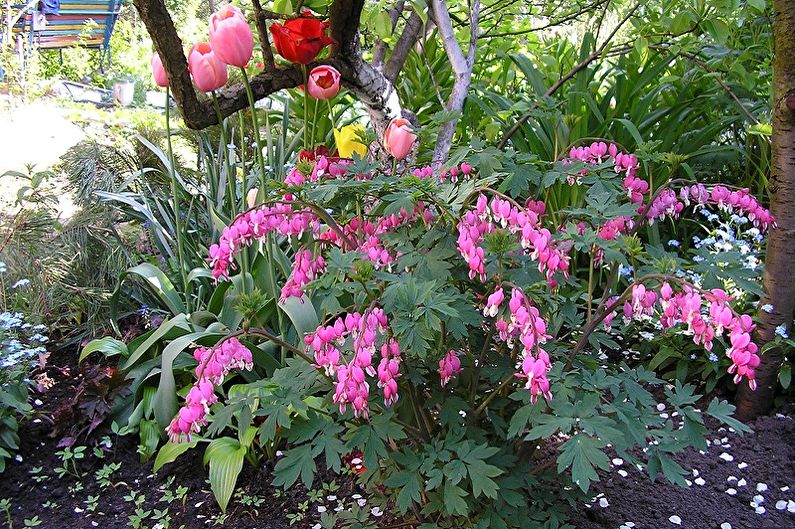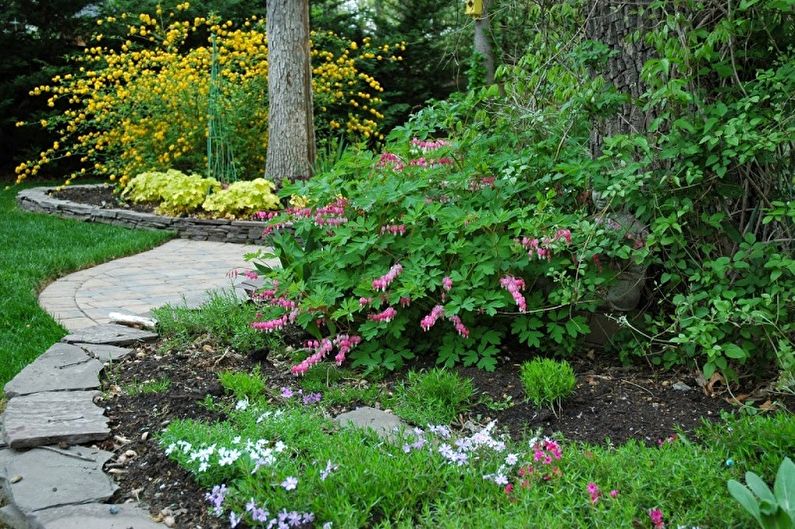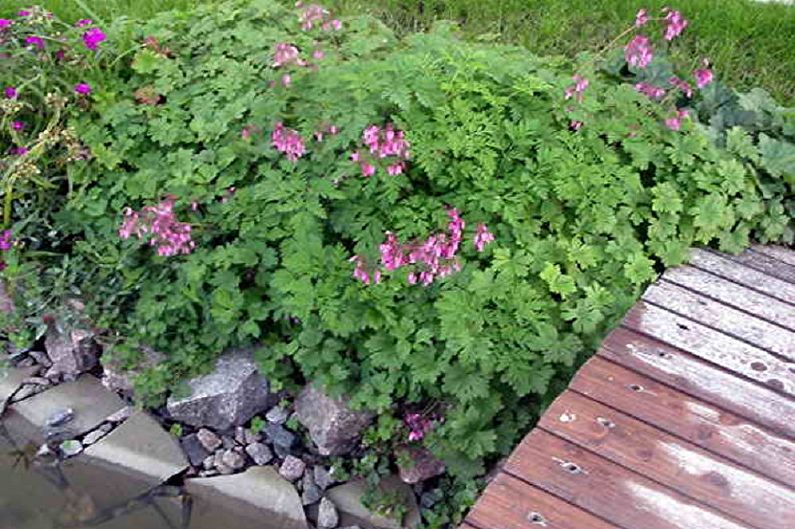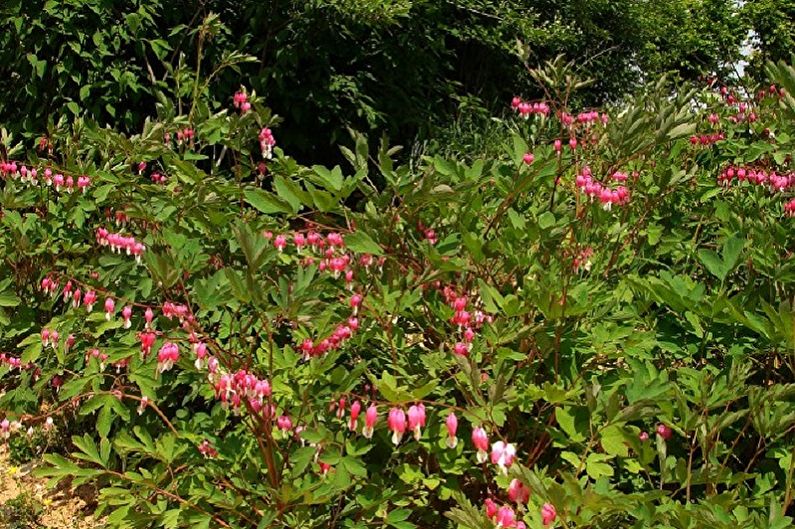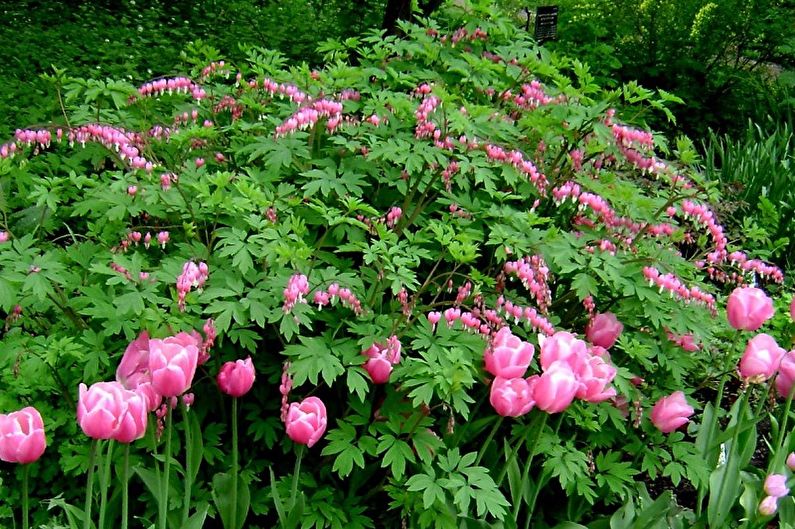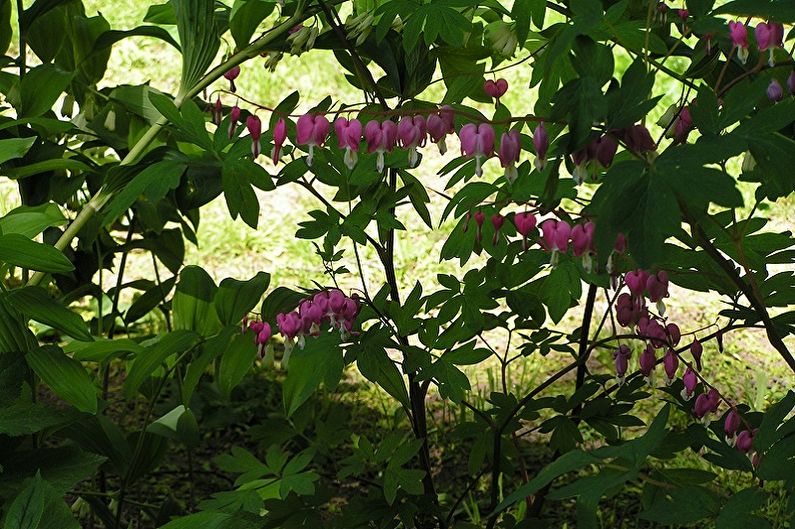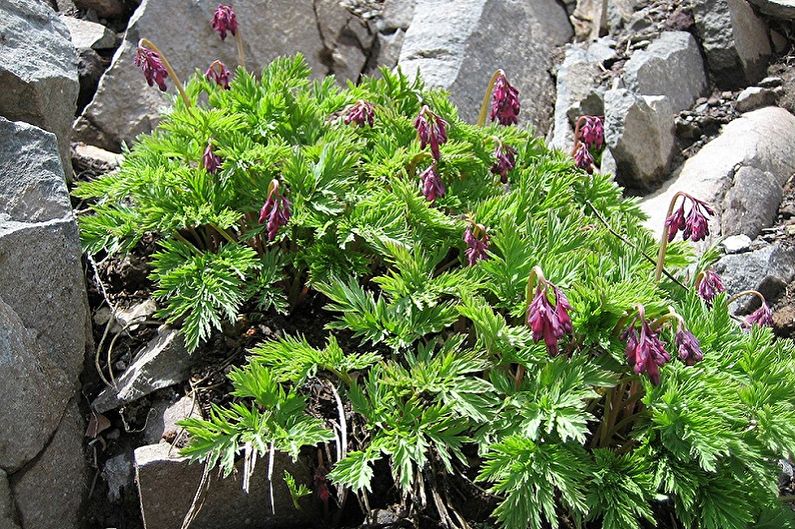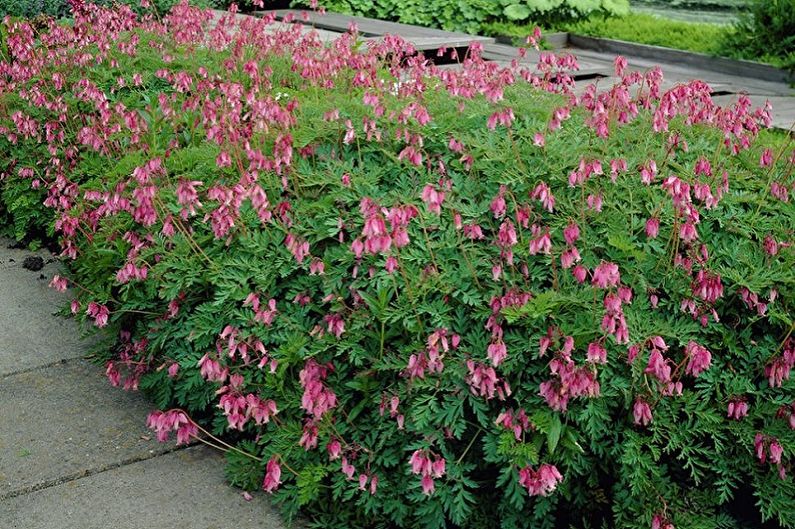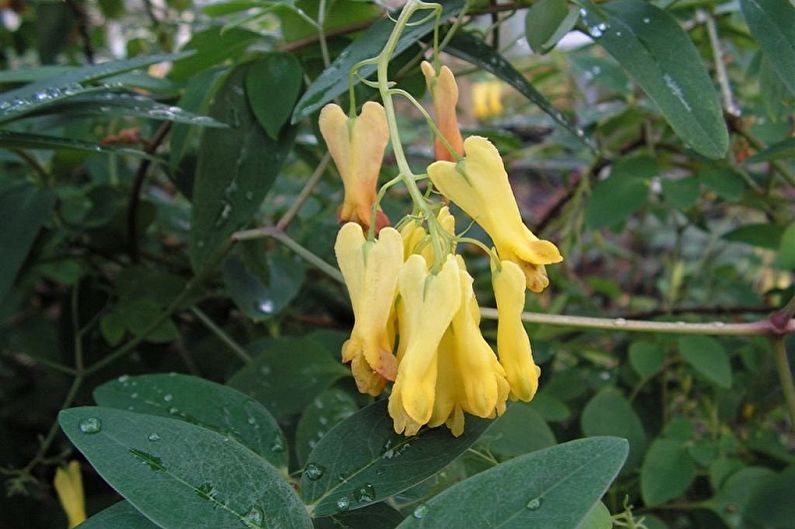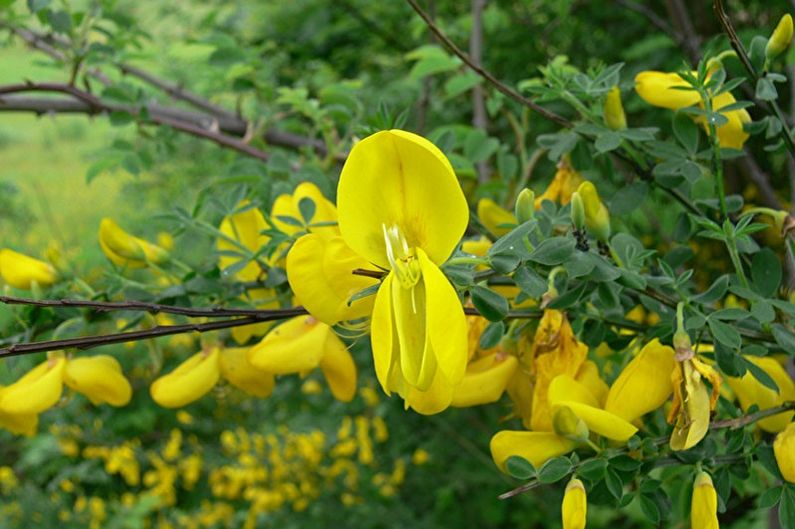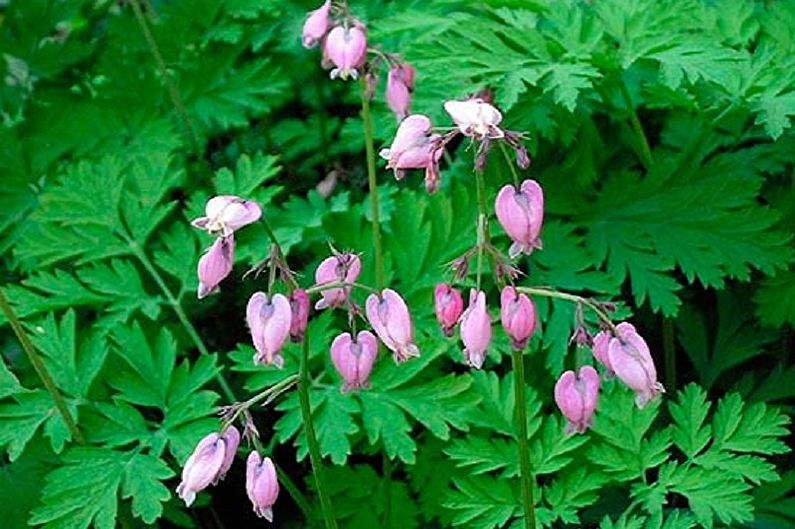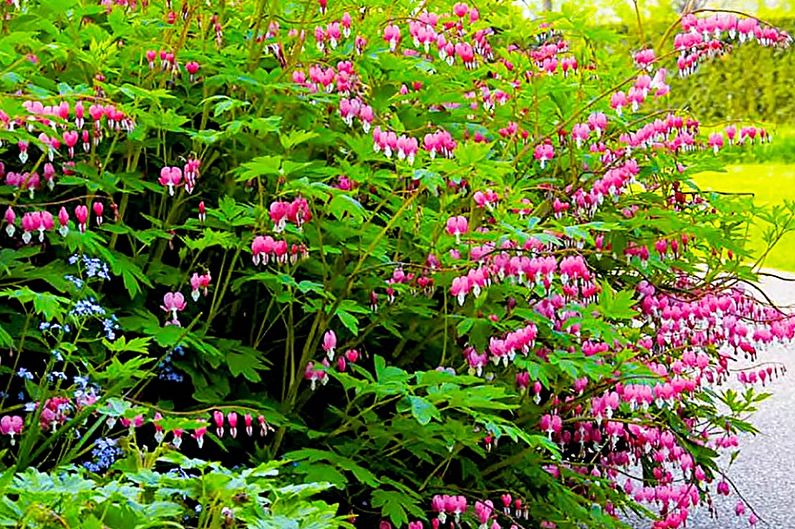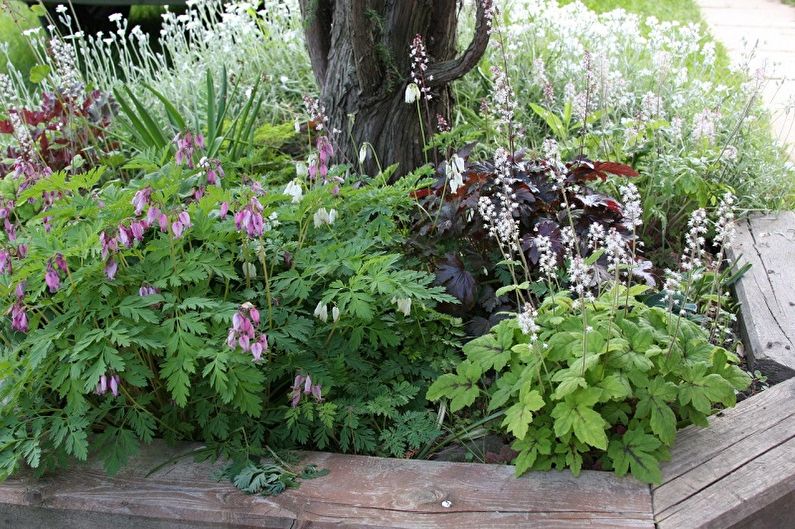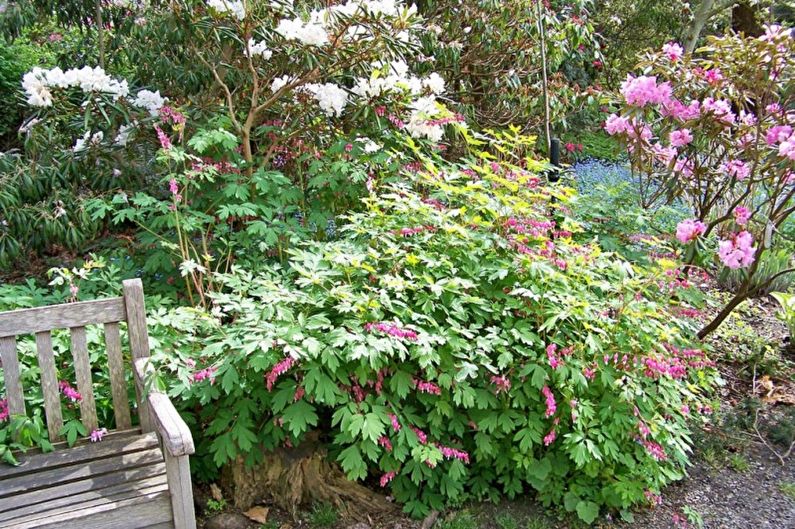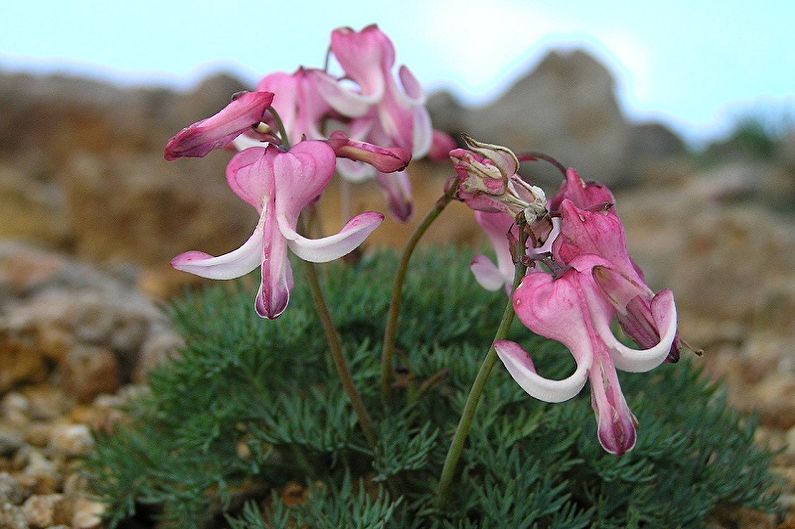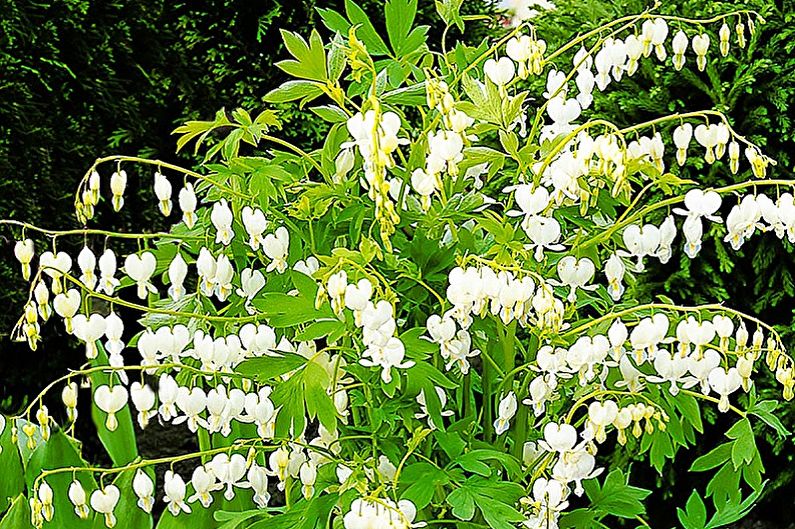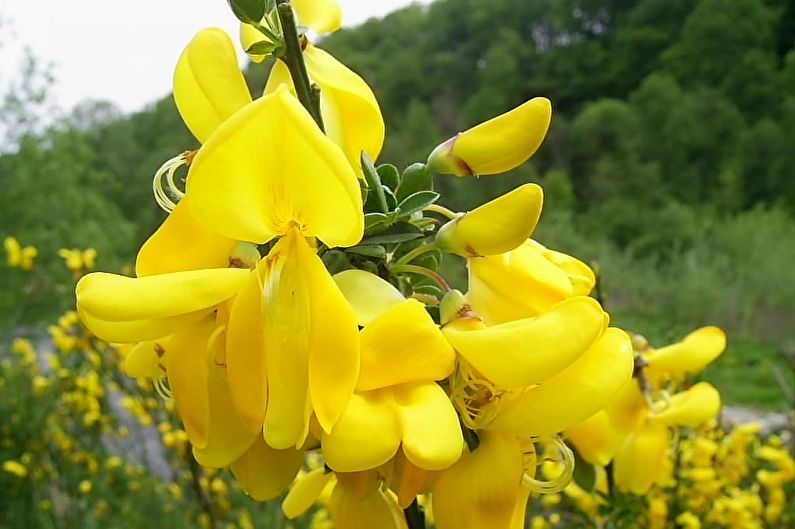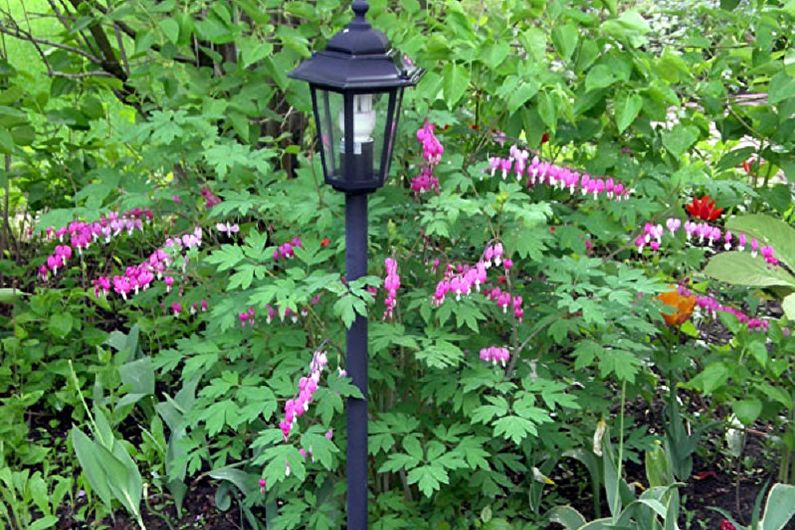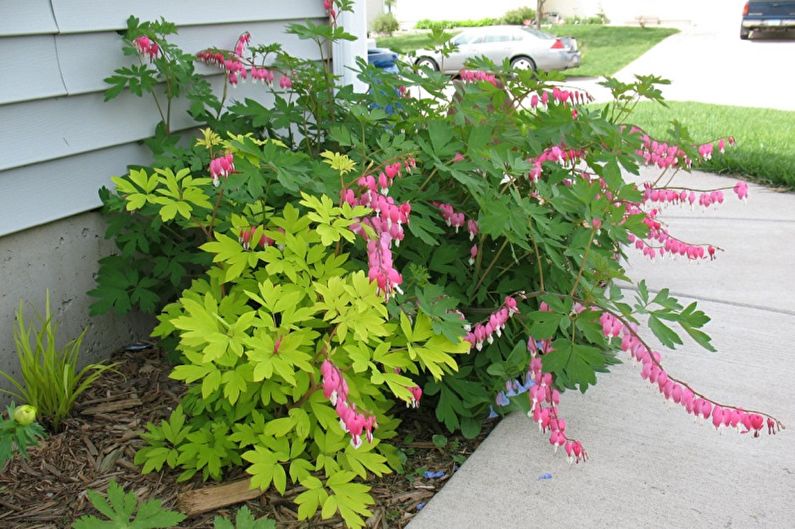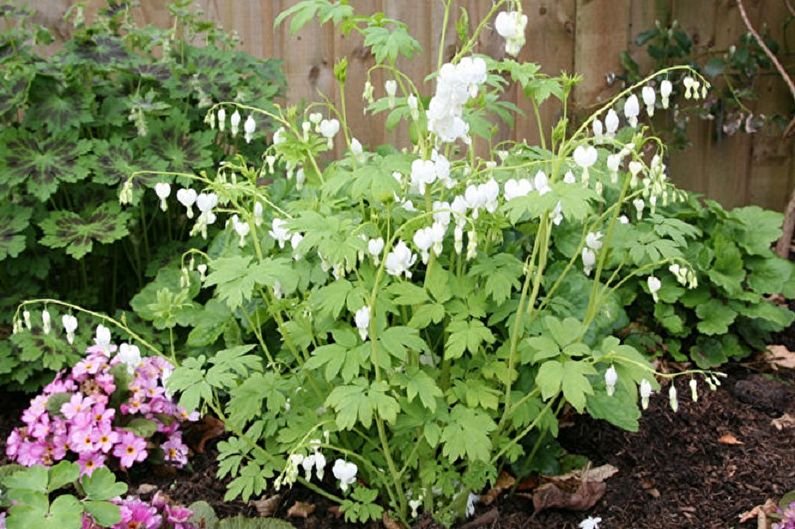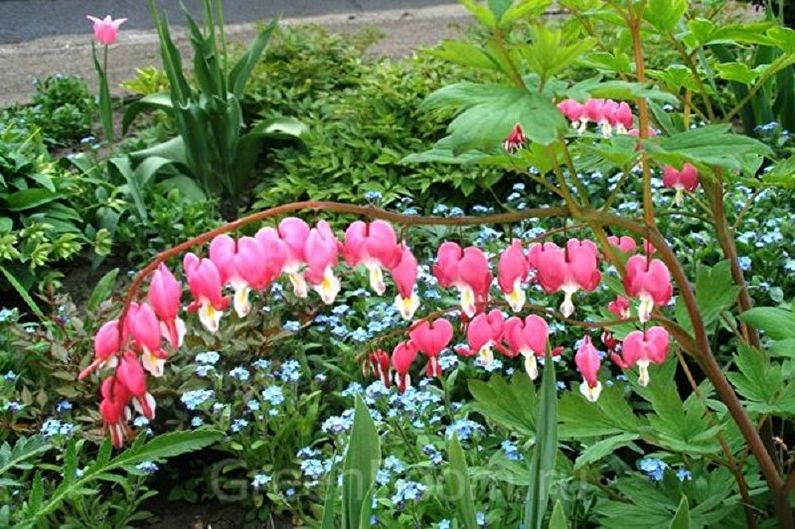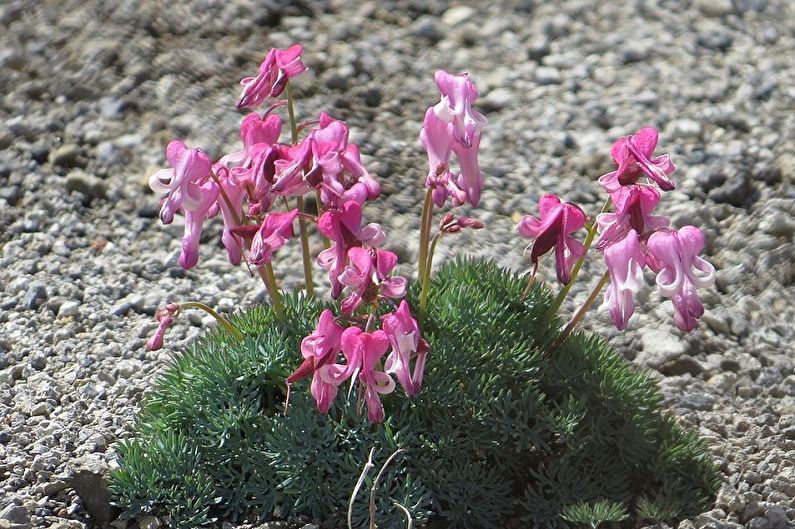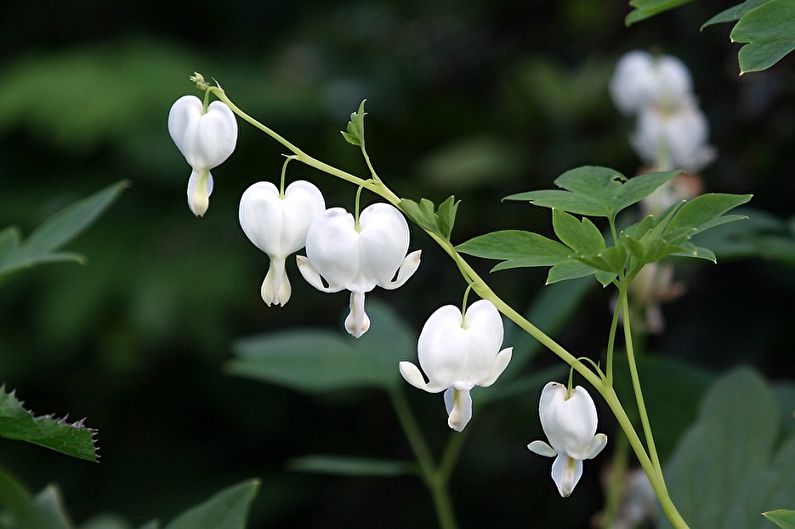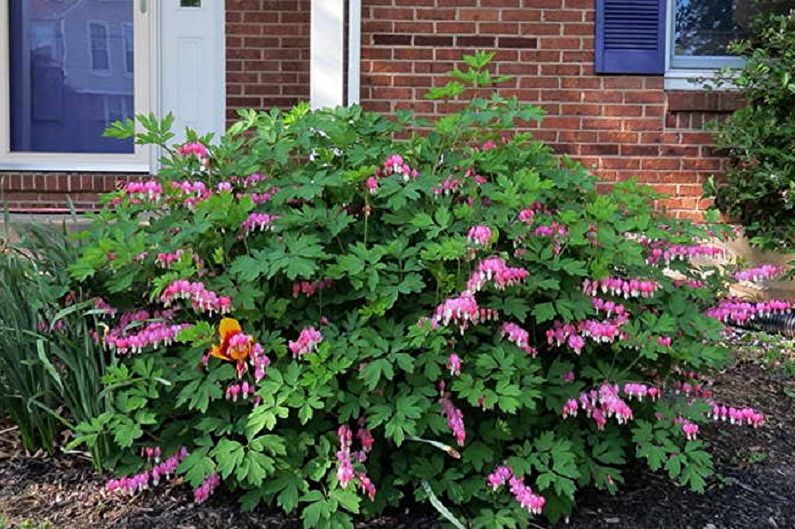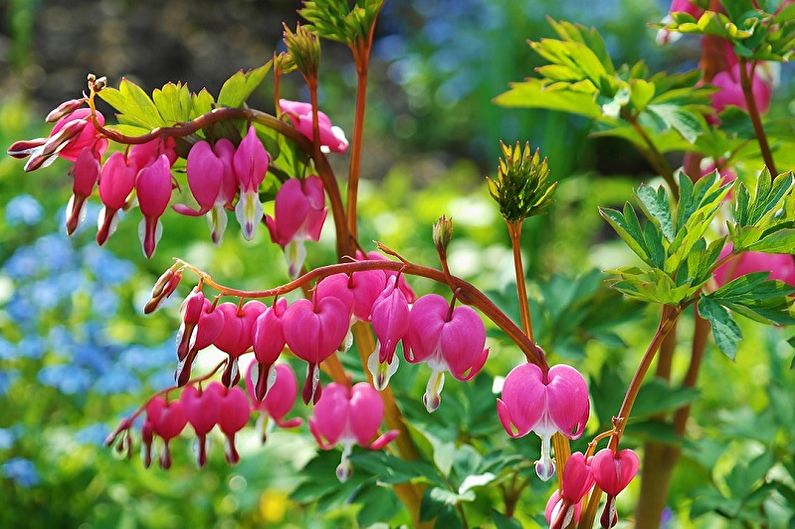
An unusual dicenter is known to many externally, but by no means to everyone - by name. An unusual flower perfectly complements flower beds, bouquets, landscape compositions and interior decor. This is a wonderful landscaper for the garden. It is used for arid corners, in rock gardens and rockeries, on rocky slopes. Due to its unpretentiousness, it fits perfectly into such conditions. But this is not all. A decorative herb is successfully grown in large flowerpots on terraces or balconies.
general characteristics
Dicenter is a herbaceous plant from the North American continent. It is found in the Far East, and in some regions of China. There are one and perennial varieties. Florists appreciate them for their special unique decorativeness combined with unpretentiousness.
There are several theories of the origin of an interesting name. The most famous of them refers to the Latin sources. Literally, “dicenter” is translated as “double-spokesman”. In practice, this directly indicates the appearance and structure of the flower. In different countries it is called a heart, a heart flower, a lock with keys or a lyre flower. Most rumors and legends are associated with a pronounced heart-shaped form of a flower.
The root system of the dicentres is powerful, fleshy, lies relatively deep. The same powerful and meaty her straight stem. The rhizome contains toxic substances, so it is better to carry out transplantation and reproduction with gloves. Also prevent possible eating of dicentric roots by animals.
Decorative leaves are dissected. Flowers grow on thin bent branches. The inflorescence is racemose drooping. Nectar is stored in small hollow formations on the outside of the petals. After flowering, a seed box appears. The flowering period itself lasts about a month in late spring or summer.
"Chip" dicentres - its unusual three-centimeter flowers. In shape, they resemble a heart, but flattened and split in the middle. The outer petals are darker, and the two inner ones are more tender and light. The main colors are shades of pink, white, red and sometimes yellow.
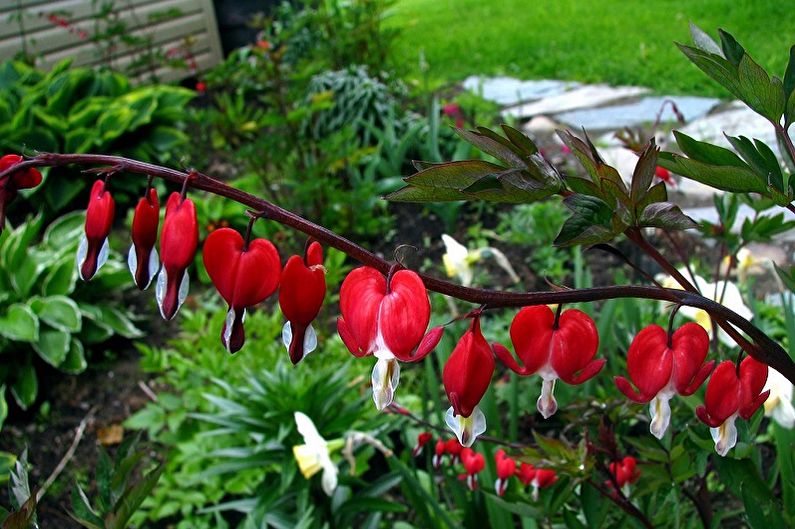
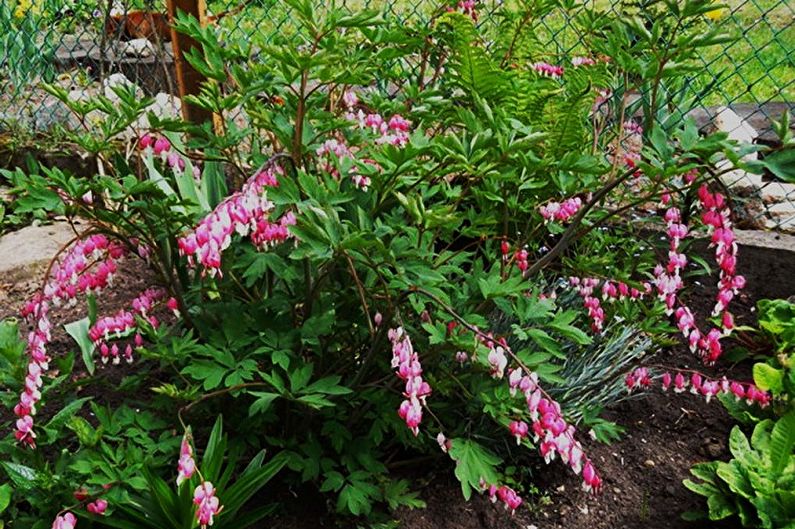
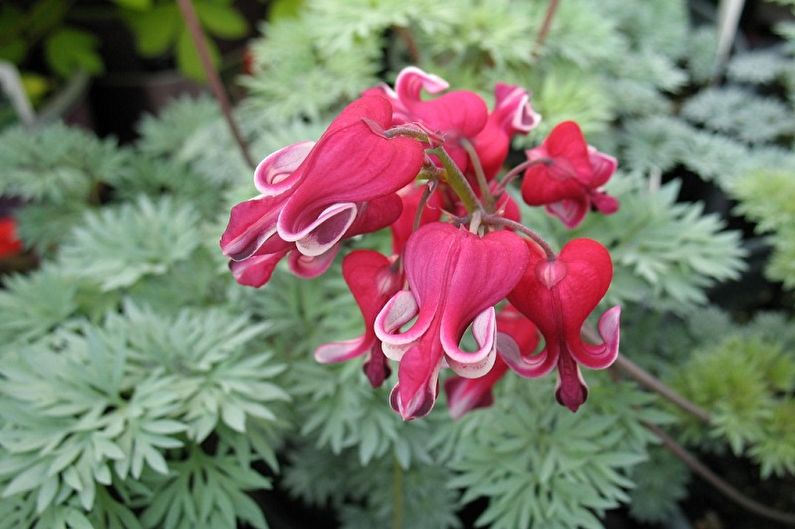
Types of dicentres
There are a lot of types of dicentres, but only some of them are used in decorative floriculture. Most often these are bright-flowering perennials. Among them there are miniature fifteen-centimeter and tall meter varieties with branched stems and cirrus foliage of saturated green color, sometimes with a bluish tint. Due to this color, the dicenter attracts attention even after the flowering period has ended.
Great dicentra
This is a classic meter perennial with large green-blue leaves on long stalks. The fleshy stem branches well and thickly overgrows with foliage. Pink flowers are collected in long twenty-centimeter brushes. There are white subspecies, but they are tiny and stunted. After they fade, the ground part of the dicentres dies, and it goes into sleep mode until next spring. Rare flowering rarely occurs. This is one of the earliest varieties.

The center is beautiful
This is a miniature undersized forty-centimeter variety. The leaves are light and the flowers are pink, cream or white. They come to life by June and continue to delight until September. Moreover, they bloom gradually, so that even in one inflorescence there can be both open flowers and young buds.

Exclusive center
It is also called excellent. This is a dwarf variety that rarely grows to 20–25 cm. It is also noteworthy for its unusual grayish-bluish tint of leaves. Against their background, white, pink and purple flowers look even brighter.Although flowering is not so intense, it is very long - up to 2 months.

Wandering center
A relict plant, whose history goes back thousands of years. It is small and elegant, up to 15–20 cm and with a short rhizome. Bright dark violet or red flowers bloom on thin peduncles. Particularly interesting, they contrast with the gray leaves. It is an ideal choice for rocky gardens and alpine slides.

Dicenter Climbing
This is a decorative liana, which reaches 2 m. Her homeland is the warm Himalayas, therefore she lives in the middle lane for only a year. Such a dicenter blooms by mid-summer.
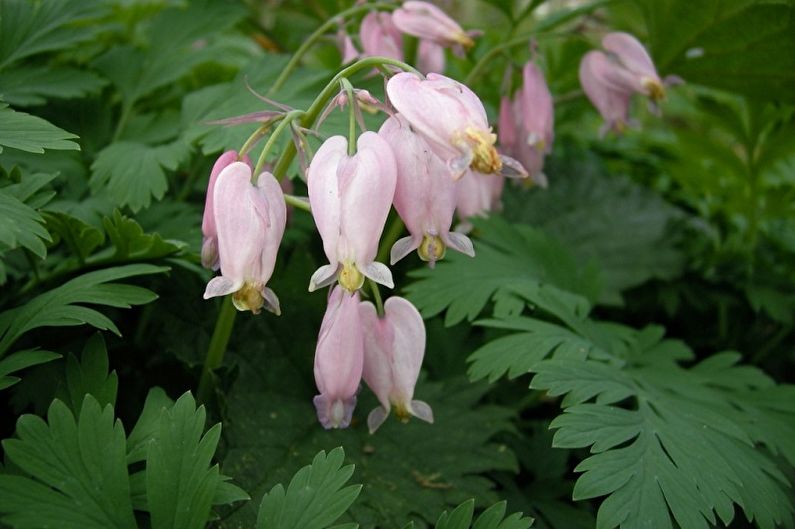
Dicentra Hood
Against the background of taller counterparts, this fifteen-centimeter flower seems tiny. Its peculiarity is a club-shaped root, which is why it got its name. Keep in mind that the leaves of such dicentres are poisonous. At the same time, they are used in pharmaceuticals and medicine. It is among these varieties that yellow flowers are most often found.

Hybrid center
Different varieties bred by breeders in the process of crossing different species fall into this category. These are mainly ornamental plants with large and bright flowers and an unusual color of leaves.

Care center
To make the dicenter happy with beautiful decorative flowering, you need to properly care for it. There are no special tricks, especially for experienced gardeners. It is enough to adhere to normal conditions.
Keep the soil light and loose. Loosening is best done after rain or watering, but do it as carefully as possible so as not to damage the delicate rhizome.
Remember that the flower does not tolerate both dryness and excessive humidity. Do not abuse watering so that the root and stem do not rot. In rainy times there is more than enough natural rainfall. In the dry season, the frequency of watering can be increased.
For perennials in autumn, remove the entire ground part, down to short stumps. After that, thoroughly mulch with peat. You can use leaves and spruce branches. Do not worry that next year the center will not have time to grow. In its rhizome there are always many buds, which with the advent of heat will give new shoots.
The many-year-old dicenter tolerates winter well, but unexpected spring frosts can “knock it out”. At first, it is recommended to cover the plant at night with spruce branches. Young flowers are especially vulnerable.
When working with tuberous species, do not forget about gloves. Their rhizomes are especially poisonous. In early spring, before the leaves have bloomed, apply complex fertilizers with superphosphates to the soil. Then it is enough to feed the plant about once a month. In the fall, add phosphate so that new buds begin to develop. As soon as the snow melts, it's time to add urea.
To prolong flowering, you must immediately remove the wilted inflorescences. At the same time, it prevents the appearance of pests and the development of infection. For some varieties, for example, for magnificent dicentres, repeated flowering can be stimulated in the same way.
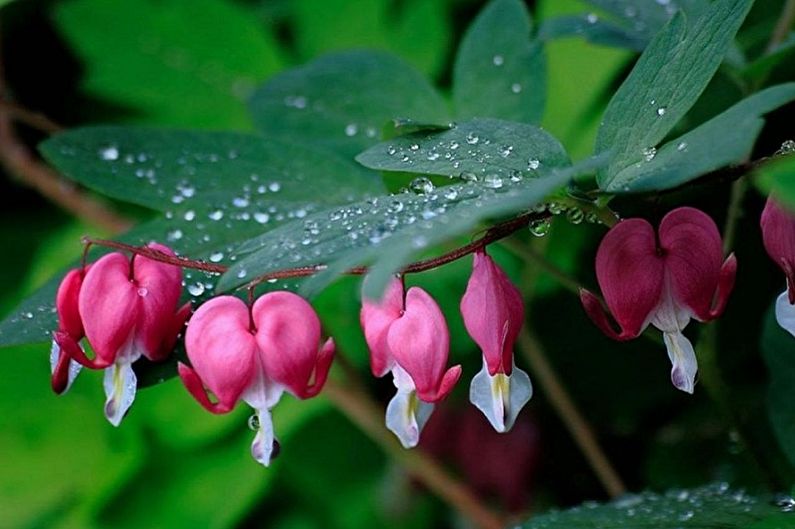
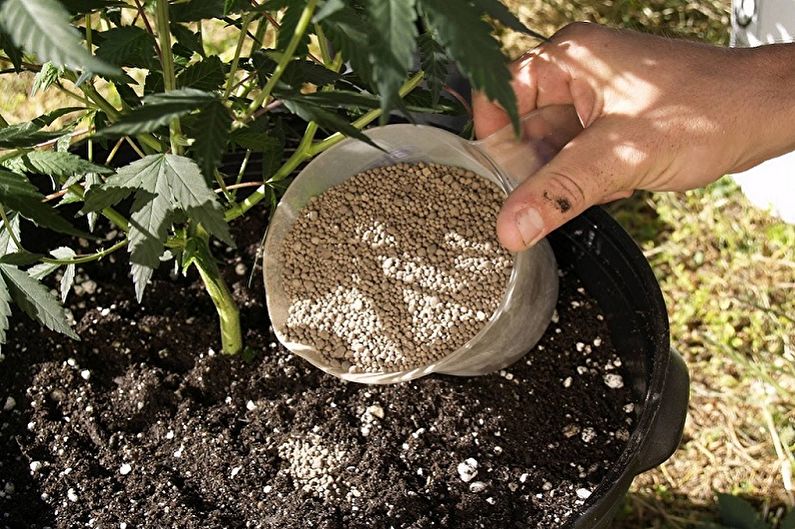
Transplantation and reproduction
Dicenter propagated by all classical methods to create home seedlings.
Growing a flower from seeds at home is long and difficult, so few people do it. They are planted in open ground in autumn or early spring. But keep in mind that some varieties do not produce seeds at all in the middle lane. To climb the seeds you need heat. Minimum - + 18C.
For cuttings, select young and healthy shoots. To speed up the process, use a root growth stimulator. Cuttings are placed in it for a day. After that, they can be planted in the ground and create greenhouse conditions. Somewhere within a month, the dicenter will take root, and next spring you can transplant it to a new place.
To separate the root, first dry it. In each part, for planting, there must be at least 2-3 kidneys, from which young shoots will then appear. Roots are planted in moist soil, ideally in greenhouse conditions.Shoots appear within a month.
Dividing a bush is the easiest method. In early autumn or late spring, divide the rhizome into several parts with shoots and immediately plant them in new permanent places. Although the dicentres have a powerful and fleshy root, it is rather delicate, so try not to damage it.
In one section, the long-term center grows to 8 years. But over time, the bush needs to be rejuvenated, otherwise it will inevitably age and weaken. The easiest way to periodically transplant a flower. Under favorable conditions, an interval of 6–7 years is sufficient.
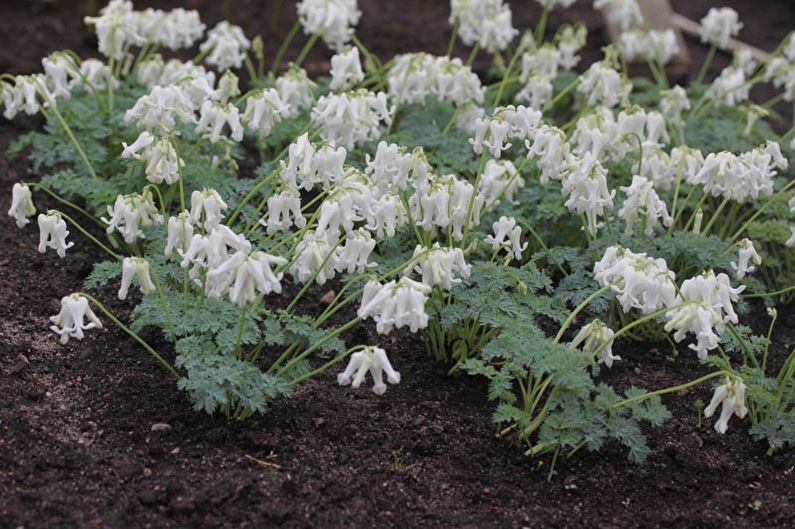
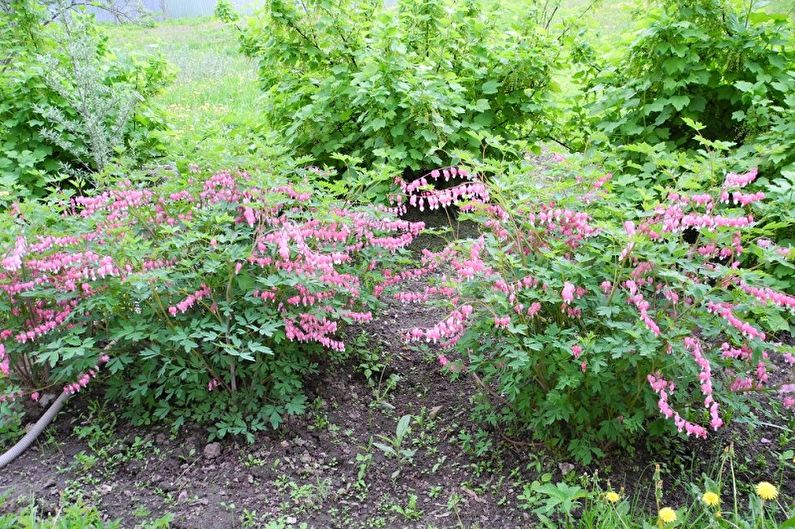
Pest and Disease Control
The center is notable for its good resistance to pests and parasites. Most often, a bear attacks her. The main problem is that it is not easy to detect. During this time, she gnaws the roots, and the plant dies. Cope with the misfortune will help timely treatment with insecticides. She will also prevent the invasion of slugs and snails, which also annoy the center.
The most dangerous diseases are fungal. Ring spotting and other noticeable defects and lesions appear. Sometimes the dicenter suffers from a microplasma disease. For prevention, you need to timely treat the soil with special antiseptics, immediately remove any damaged fragments and do not forget about weeding.
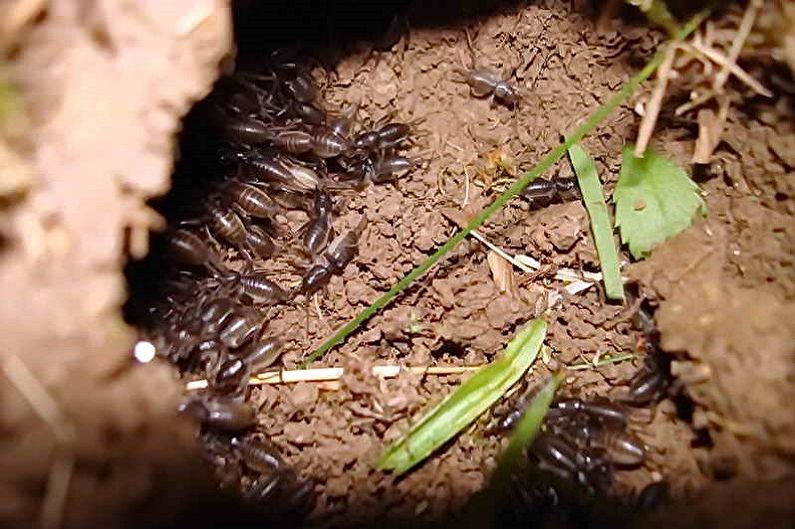

Dizentra - photo
And to better understand what a dicenter is and where to place it successfully, see our selection of photos! We have collected only the most interesting pictures and creative ideas for your inspiration!

